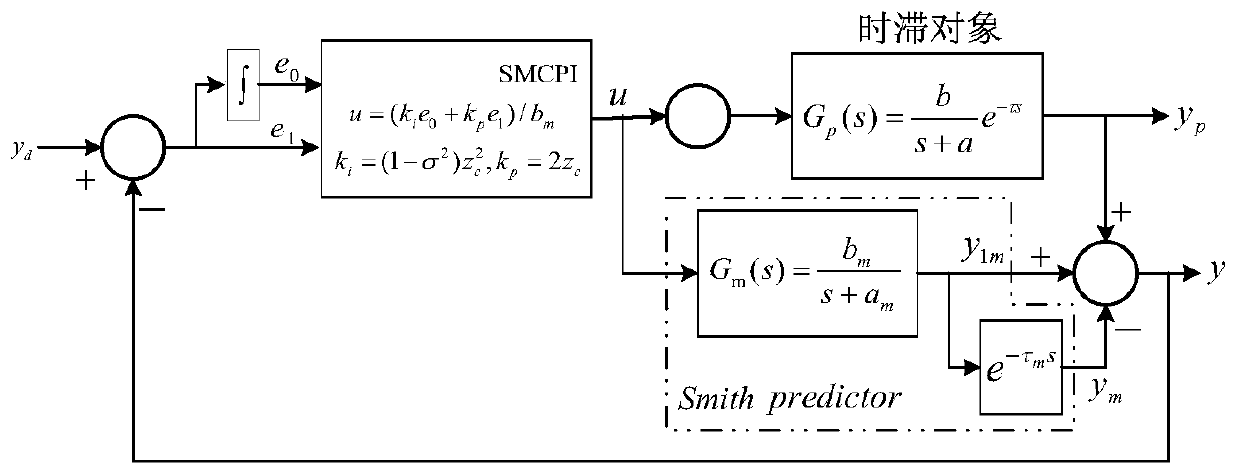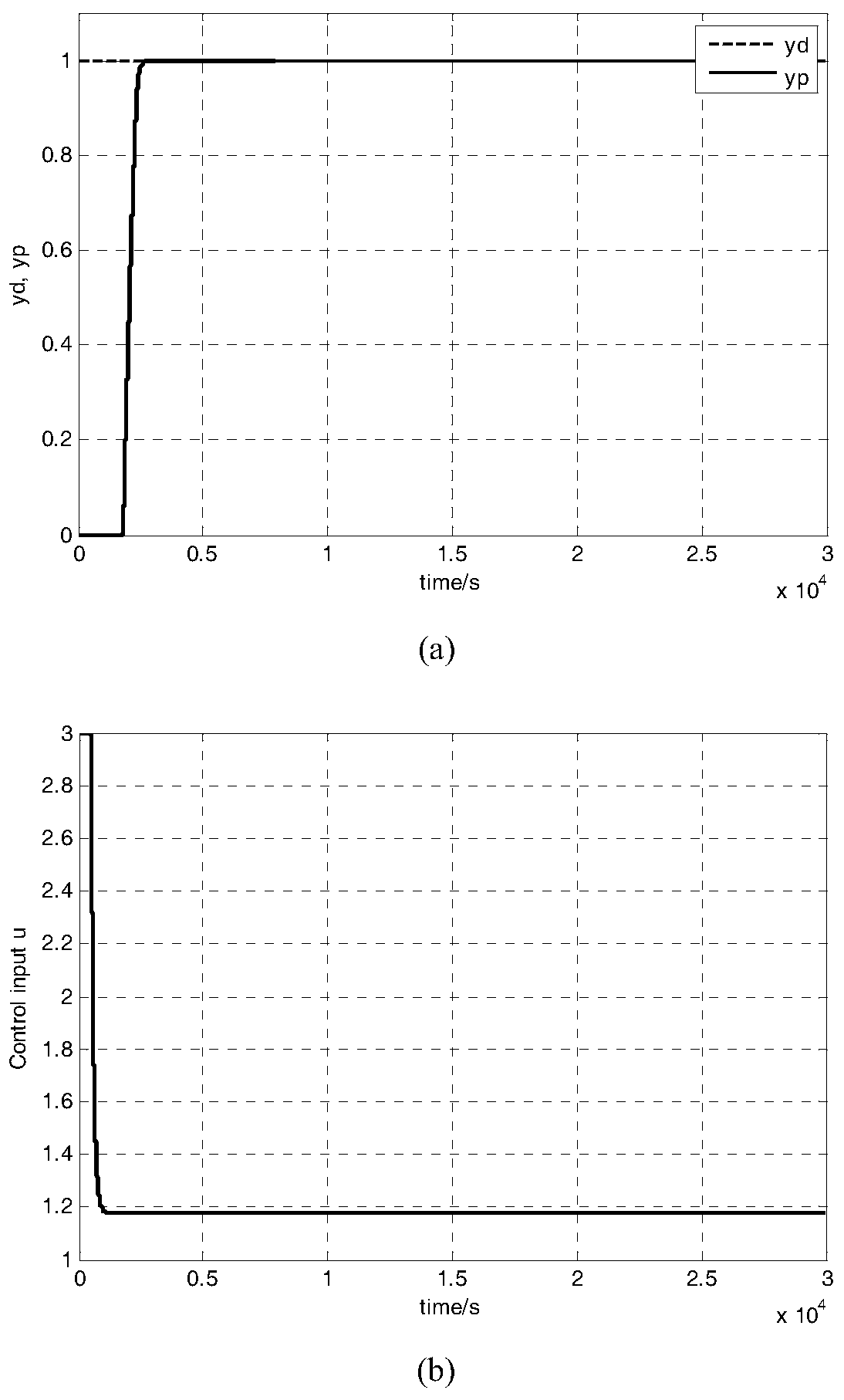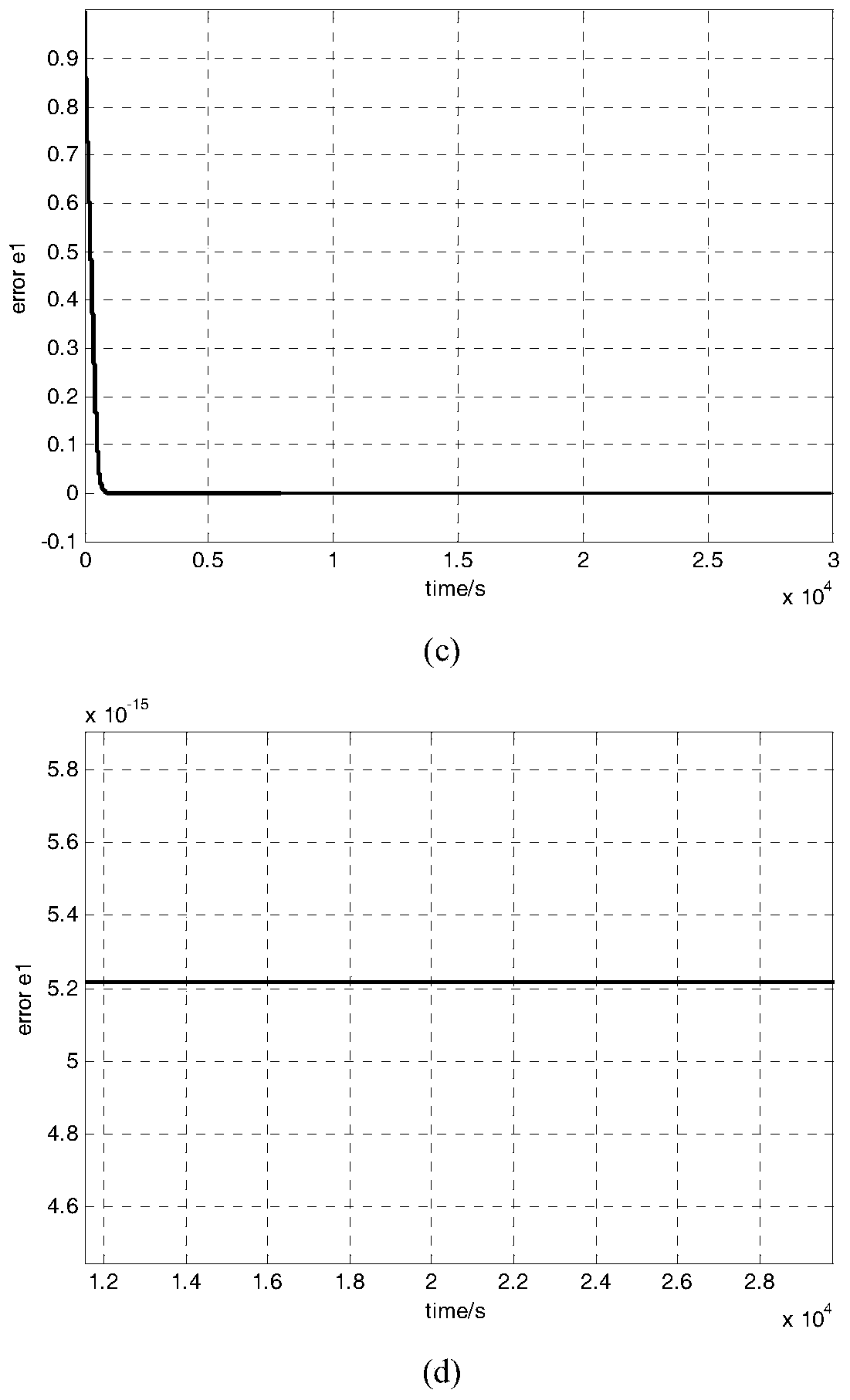Novel Smith mutual coupling PI cooperative control theory method of time delay system
A time-delay system and cooperative control technology, applied in the direction of adaptive control, general control system, control/regulation system, etc., can solve the time-delay system's sensitive control performance, small stability domain margin, appropriate range, slow response speed, etc. question
- Summary
- Abstract
- Description
- Claims
- Application Information
AI Technical Summary
Problems solved by technology
Method used
Image
Examples
Embodiment Construction
[0033] The specific implementation manners of the present invention will be described in detail below in conjunction with the accompanying drawings and examples.
[0034] 1. Smith predictive compensation model for time-delay systems
[0035] 1) Problem description
[0036] In the industrial production process, the first-order plus pure lag model is often used to simulate the large time-delay process in the production process, and its transfer function can be expressed as
[0037]
[0038] Among them, T is the system time constant, τ is the delay time, and K is the system gain.
[0039] The corresponding differential equation of the time-delay system (1) is
[0040]
[0041] Among them, a=1 / T, b=K / T, u is the control input, y 1is the internal state of the time-delay system, y p is the actual output of the time-delay system.
[0042] Let the desired output be y d , according to the characteristics of the time-delay system, when t1 =y d -y p =y d has been in the ma...
PUM
 Login to View More
Login to View More Abstract
Description
Claims
Application Information
 Login to View More
Login to View More - R&D
- Intellectual Property
- Life Sciences
- Materials
- Tech Scout
- Unparalleled Data Quality
- Higher Quality Content
- 60% Fewer Hallucinations
Browse by: Latest US Patents, China's latest patents, Technical Efficacy Thesaurus, Application Domain, Technology Topic, Popular Technical Reports.
© 2025 PatSnap. All rights reserved.Legal|Privacy policy|Modern Slavery Act Transparency Statement|Sitemap|About US| Contact US: help@patsnap.com



